Kemerovo - Overview
Kemerovo is a city located in the southeast of Western Siberia in Russia, in the northern part of the Kuznetsk coal basin (Kuzbass), about 3,600 km east of Moscow. The administrative center of Kemerovo Oblast, it is an important industrial, transport, economic, scientific, and cultural center of Siberia.
The population of Kemerovo is about 548,000 (2022), the area - 295 sq. km.
The phone code - +7 3842, the postal codes - 650000-650970.
History of Kemerovo
The history of the development of Kemerovo is closely connected with the development of Western Siberia. The oldest settlement on the territory of today’s Kemerovo was the village of Scheglova located on the right bank of the Tom River and first mentioned in 1701.
In 1721, the ore prospector M. Volkov found “combustible stone” (coal) near this village for the first time in Kuzbass. However, at that time this discovery didn’t lead to any practical steps for the development of these coal deposits.
By 1734, not far from Scheglova, along with a number of other villages, the village of Kemerova emerged (later Kemerovo; named after the first settler A. Kemirov). In 1825-1827, the Shcheglovskoye coal deposit was studied by geologists. In the 19th century, there were several villages in the territory of the future city.
In 1907, the Kemerovo mine was founded on the basis of the Shcheglovskoye coal deposit. In 1915, the main shaft of the Kemerovo mine was built. In 1918, the village of Scheglovo was transformed into the county town of Scheglovsk. In 1921, coal production in Kuzbass began to rise. In 1926, the population of the town was about 22,000 people.
More historical facts…
With the development of industrial construction, the town began to grow. In June 1930, a session of the Town Council considered a draft design for the planning of Scheglovsk. The city was designed for 130 thousand residents. When considering the project, the question arose of the name of the city. The residents actively participated in the discussion of this issue.
It was decided that the name of the former village of Shcheglova didn’t have a direct historical connection with the city specialized on the extraction and processing of coal. On March 27, 1932, Shcheglovsk was renamed Kemerovo. Its further development was associated with the rapid development of industrial production. In 1938, the city had more than 100 industrial facilities. In 1939, Shcheglovsk had about 133,000 residents.
In 1941, during the Second World War, a number of plants were evacuated from the western regions of the USSR to Kemerovo. Gunpowder and explosives were produced at local defense enterprises. On January 26, 1943, the Kuzbass Industrial Region received the status of a separate region (oblast). Kemerovo became the administrative center of Kemerovo Oblast.
In 1945, Kemerovo was a miserable sight with numerous dilapidated buildings and undeveloped streets. The city urgently needed a development and improvement plan, which was made over four years from 1947 to 1951. Kemerovo developed according to this plan until 1970. The city continued to grow, absorbing nearby villages. In 1989, the population of Kemerovo was about 520,000 people.
On October 16, 2006, the Kuznetsk Bridge was commissioned in Kemerovo - one of the widest bridges (40.5 meters) in Siberia, which replaced the obsolete Communal Bridge.
In today’s Russia, Kemerovo, as before, is a large industrial center. Income from coal mining occupies a major place in the total income of the city.
Architecture of Kemerovo
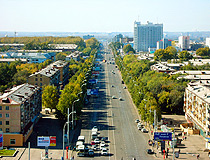
Kemerovo cityscape
Author: Evgeny Shevchenko
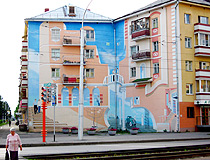
Graffiti on apartment buildings in Kemerovo
Author: Igor Khmaro
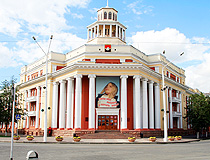
The City Hall of Kemerovo
Author: Igor Khmaro
Kemerovo - Features
The city of Kemerovo is located in the forest-steppe strip of the southern part of Western Siberia, in the northern part of the Kuznetsk coal basin, on both banks of the Tom River at the confluence of the Iskitim River. The right-bank part of the city is connected to the left bank by two automobile and one railway bridges.
The climate of Kemerovo is sharply continental. It is characterized by a long cold winter lasting about 5 months and a short, quite warm summer. The average temperature in January is minus 17 degrees Celsius, in July - plus 19 degrees Celsius.
The City Day is celebrated on June 12 and coincides with the Day of Russia. On the last Sunday of August, Kemerovo celebrates Miner’s Day. The airport of Kemerovo located about 2.5 kilometers south-east of the outskirts of the city offers regular flights to Moscow, St. Petersburg, Novosibirsk, Kazan, Sochi.
On the coat of arms of Kemerovo you can see the image of a stylized chemical retort and gear parts that symbolize the chemical and engineering industries - the main directions of industrial development of this city. Ears of wheat symbolize the fertility of soil associated with the use of mineral fertilizers produced at the chemical enterprises of Kemerovo.
Kemerovo is one of the largest industrial centers of the region (chemical and coal industries, mechanical engineering, electric power generation). JSC “SDS Azot” is one of the largest manufacturers of nitrogen fertilizers in Russia. The presence of raw materials (coal, refractory clay, limestone, quarry stone, gravel, wood), a convenient industrial site, and railway communication led to the creation of a powerful energy-chemical complex here.
The recreational potential of the city is represented by a pine forest on the right bank of the Tom River, as well as an island and beaches on the Tom River.
In total, there are more than 100 objects of cultural heritage in Kemerovo. These are monuments of architecture and urban planning, monumental art, history and archeology. Kemerovo is in the full sense a city of miners and most of its attractions are somehow connected with the mining industry.
Main Attractions of Kemerovo
“Krasnaya Gorka” - a museum-reserve created on the territory of the former coal mine. The district of Krasnaya Gorka (“red hill”) is an open-air museum. Here, on the steep bank of the Tom River, you can see a unique complex of monuments of mining, historical and cultural heritage. The monuments constitute a single thematic complex associated with the development of the coal industry of Kuzbass. The exposition “Coal Mine” is open in the basement of the museum. Krasnaya Gorka Street, 17.
The Red Hill and the monument “In Memory of the Kuzbass Miners”. One of the most important places in Kemerovo, part of the Krasnaya Gorka Museum-Reserve. The history of Kemerovo began here. This name originates from flashes of fire at the site of the first coal discovered in Kuzbass. It is one of the highest places in the city with the best observation deck of Kemerovo. Also there is an impressive monument dedicated to miners here.
Vesennyaya Street - one of the oldest streets in Kemerovo about 1.5 km long. In the middle of the street there is a boulevard - a popular resting place for locals and visitors of Kemerovo. Here you can see a number of interesting sculptural compositions.
Kemerovo Regional Museum of Fine Arts. The collection of this museum includes more than 5 thousand works of art, most of which are on display in the permanent exhibition. In the halls of the museum visitors can see the paintings of Russian artists created from the late 18th to the beginning of the 21st centuries, works of masters of decorative and applied art, an excellent collection of old icons. Sovetskiy Avenue, 48.
Kemerovo Regional Museum of Local Lore - the oldest museum in the region with a large collection of natural and historical monuments of Kuzbass. This museum has one of the largest paleontological collections in Russia. Sovetskiy Avenue, 55.
The museum “Archeology, Ethnography, and Ecology of Siberia”. Here you can learn about the history and nature of this unique region. There are exhibitions about the flora and fauna of Siberia, Kazakhstan, the Far East, and Central Asia. The archaeological section has collections of artifacts related to the Stone and Bronze Ages, the Scythian and Hunnic periods. Separate halls are devoted to ethnography. Sovetskiy Avenue, 77.
The Coal Museum - the only museum of coal in Russia. The Kemerovo region is one of the largest suppliers of coal in Russia, the variety of coal mined here is recognized globally. Here you can see unique collections of coal, exhibits devoted to mining technologies and the history of the development of the Kuznetsk coal basin. Leningradskiy Street, 10.
Chudes (Miracles) Park - the oldest park in Kemerovo opened more than 80 years ago, a great place for families. Playgrounds with safe swings and carousels for kids, rides of varying degrees of extremeness, sports grounds, the Children’s Railway, a ferris wheel attract a lot of visitors. There are several cafes in the park; in the evenings, artists perform on stages. The pedestrian promenade along the bank of the Tom River begins here. Kirova Street, 4.
“Kuzbass Railway Museum” - a small museum of rare railway equipment. The exposition consists of ten exhibits and is located in the city center near the Pionerskaya station of the Children’s Railway. Pritomskiy Avenue, 2.
Kemerovo also has such cultural institutions as a philharmonic, a drama theater, a puppet theater, a musical theater, and a circus.


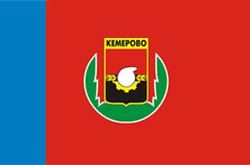
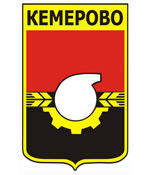
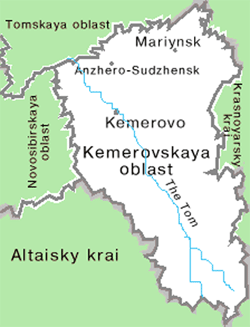



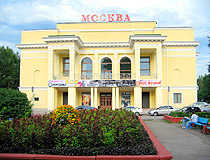
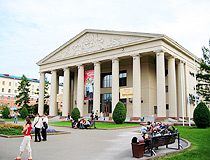
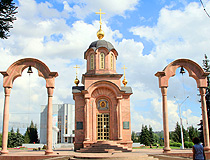
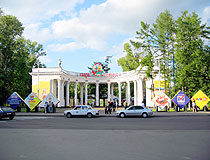
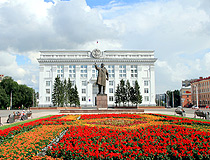
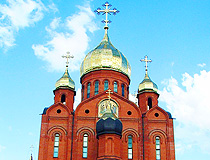
The comments of our visitors